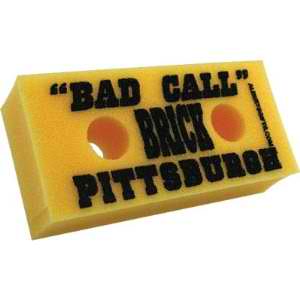Robinson Cano, the Seattle Mariners’ $240 million second baseman, is having a really good year. Through 62 games, Cano has appeared in 58, batting .330, 20 points higher than his career average, and getting on base at a .379 clip, 23 points higher than his career pace. With 31 RBI, Cano leads 2B in the AL. He’s even managed to steal 5 bases, a skill Cano is not usually noted for, with his career high being 8 in 2011 with the Yankees.
Cano may legitimately vie for the batting title. In the AL, of players with at least 200 AB, only Alex Rios of the Texas Rangers has a higher batting average at .332. Detroit Tiger teammates Victor Martinez and Miguel Cabrera are right behind Cano at .329 and .326 respectively.
What is unexpectedly missing from Cano’s offensive game so far this season, and was undoubtedly why he commanded the salary he received, is power. Cano has a lifetime slugging percentage of .501, with a high of .550 in 2012, and has hit no fewer than 25 home runs since 2009, with a high of 33, also in 2012.
This season, Cano is slugging .417 and is on pace to hit just 5 home runs.
So, where has all the power gone? The standard argument so far this season is he left it in Yankee Stadium, with its left handed pull hitter friendly 314 foot short porch in right field.
Looking back at Cano’s monster 2012 season where he hit .313/.379/.550 with 33 HR, 105 R, and 94 RBI, we can see how instrumental Yankee Stadium was to his power numbers that year. Twenty-two of Cano’s 33 HR came in Yankee Stadium, exactly 2/3. Now it’s not unusual for a player to have the majority of his home runs at home. After all, half of the games are played at home, but a 2/3 split is pretty severe.
So, let’s take a look at his HR totals beginning in 2009, when Cano’s doubles’ power really started translating into HR power. His splits are as follows:
| Season | Total HR | Home HR | Road HR | Home HR % |
| 2009 | 25 | 14 | 11 | 56% |
| 2010 | 29 | 16 | 13 | 55% |
| 2011 | 28 | 16 | 13 | 57% |
| 2012 | 33 | 22 | 11 | 66% |
| 2013 | 27 | 11 | 16 | 41% |
It appears 2012 was an outlier with the extreme power numbers in Yankee Stadium. It’s also interesting that last season he hit the majority of his HR on the road. So, clearly Cano is capable of hitting 11 to 16 home runs on the road, as he has demonstrated over the past five seasons. But, should we expect 14 to 22 home runs at home in Safeco? Probably not.
In the same five year period from 2009 to 2013, Cano had 94 AB in Safeco, admittedly against Mariners’ pitching, and he hit 3 HR. In his debut season in a Mariners’ uniform, he has 92 AB and no HR in Safeco. Both 94 AB as a Yankee over five seasons and the 92 AB as a Mariner this season are small samples, but put them together and you have to think there may be something about Safeco that doesn’t quite fit Cano’s swing.
But with that said, it’s also reasonable to assume that a HR even every 40 AB at home is going to translate into 10 or so per season, perhaps a few less, and that he should continue to hit 11, 12, or 13 on the road. It may be that Cano is going to be a 15 to 20 HR guy in Seattle rather than the 25 to 30 HR guy he was in New York.
So far this season, Cano’s slugging percentage against left handed pitching is .358, which is higher than in past seasons, albeit with only 95 AB to look at. It’s his slugging against righties that’s disturbing, .459 in 135 AB. Compare that to 2012, for instance, when he slugged .658 against right handed pitching.
ESPN’s nifty “Hot Zones” tool shows that Cano is hitting righties high and inside and low and in the middle of the plate, and not much of anywhere else. I can’t help but think this will improve in the second half of the season, given Cano’s historically consistent power against right handed pitching.
At this point, I’d look for Cano to finish the season hitting around .315 to .320 (and possibly join Edgar Martinez, Alex Rodriguez, and Ichiro Suzuki as Mariners’ who’ve won batting championships), improve his slugging to around .480 or so, score 70 runs, drive in 70, hit maybe 12 home runs and, who knows, steal 11 or 12 bases.
Not exactly what the front office thought they were getting for a quarter of a billion dollars, but very fine production for a middle infielder at the center of the Mariners’ lineup. Now what the team needs is a right handed bat with pop to compliment Cano, as General Manager Jack Zduriencik promised at the time he signed Cano.
Add The Sports Daily to your Google News Feed!
